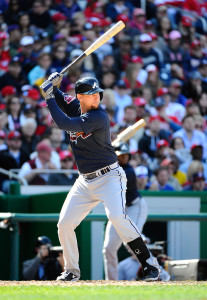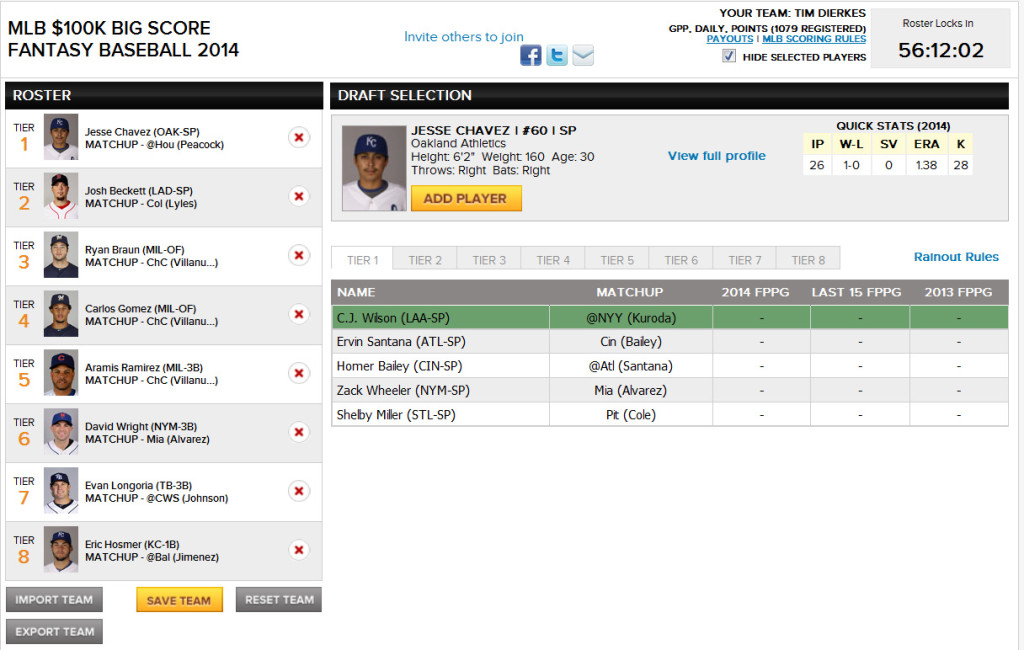Looking to show off your fantasy baseball skills and get your share of a $2500 prize pool? Check out DraftStreet’s latest Pick’Em League for MLBTR readers. This one-day fantasy contest covers Friday’s games only and has an $11 buy-in.
The Pick’Em draft room contains eight tiers of players, and you simply have to pick one player from each tier. Click here to see the stats that will be used. The Pick’Em League begins is for Friday night’s games, so sign up by 6:55pm eastern time. The top 40 finishers will be paid, with the top spot earning $500.
Here’s a look at my team:
Sign up for the DraftStreet MLBTR Pick’Em League before Friday’s games start!
This is a sponsored post from DraftStreet.



